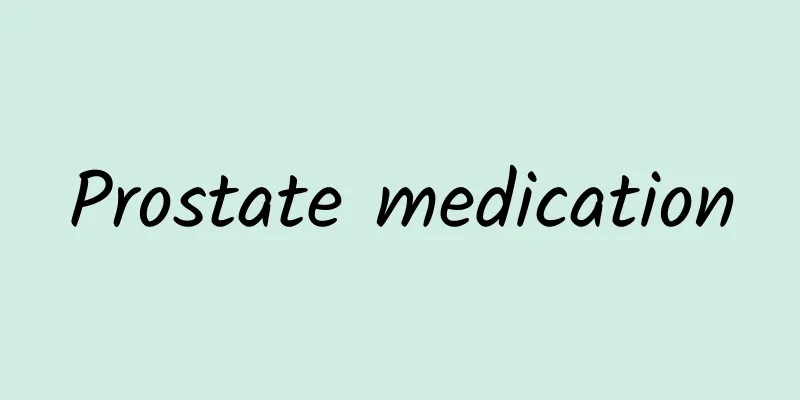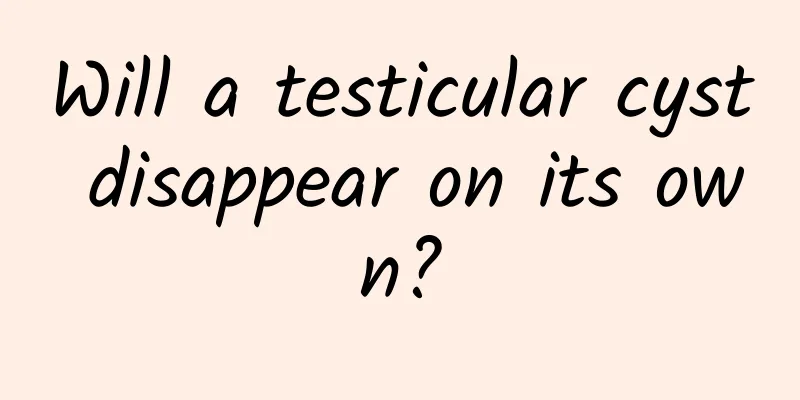Prostate medication

|
Male friends may suffer from prostate disease if they are not careful. This disease mainly requires the use of drug treatment. Since the vast majority of patients suffer from this disease due to fungal infection, antibacterial treatment is required, so antibacterial drugs will be used. However, this treatment is relatively slow to take effect, so you should still insist on taking the medicine to avoid recurrence during treatment. 1. Antimicrobial therapy The detection of pathogenic pathogens in prostatic fluid culture is the basis for selecting antibacterial drug treatment. If patients with non-bacterial prostatitis have signs of bacterial infection and general treatment is ineffective, they can also be appropriately treated with antibacterial drugs. When choosing antibacterial drugs, it is necessary to pay attention to the presence of a prostate-blood barrier composed of lipid membranes between the prostate acini and the microcirculation. The barrier prevents the passage of water-soluble antibiotics, greatly reducing the treatment effect. When prostate stones are present, the stones can become a shelter for bacteria. The above factors constitute the difficulty in the treatment of chronic bacterial prostatitis, which requires a longer course of treatment and is prone to recurrence. Currently, quinolone drugs such as ofloxacin or levofloxacin are recommended. If ineffective, continue to use for 8 weeks. If recurrence occurs and the strain remains unchanged, switch to preventive doses to reduce acute attacks and relieve symptoms. If long-term use of antibiotics induces severe side effects such as pseudomembranous colitis, diarrhea, and the growth of drug-resistant strains in the intestine, the treatment plan needs to be changed. Whether nonbacterial prostatitis is suitable for treatment with antibiotics is still a clinical debate. Patients with "sterile" prostatitis can also use drugs that are effective against bacteria and mycoplasmas, such as quinolones, SMZ-TMP or TMP alone, used in combination with tetracycline and quinolones or used intermittently. If antibiotic treatment is ineffective and it is confirmed to be sterile prostatitis, antibiotic treatment should be discontinued. In addition, using a double balloon catheter to block the prostatic urethra and injecting an antibiotic solution from the urethral cavity into the prostatic duct can also achieve the treatment goal. Type I is mainly treated with broad-spectrum antibiotics, symptomatic treatment and supportive treatment. Type II is recommended to be treated with oral antibiotics, and sensitive drugs are selected. The course of treatment is 4 to 6 weeks, during which the patient should be evaluated for the efficacy. Type III can first take oral antibiotics for 2 to 4 weeks and then evaluate the efficacy. At the same time, non-steroidal anti-inflammatory drugs, α receptor antagonists, M receptor antagonists, etc. are used to improve urination symptoms and pain. Type IV does not require treatment. 2. Anti-inflammatory and analgesic drugs Nonsteroidal anti-inflammatory drugs can improve symptoms. Generally, indomethacin is taken orally or in suppositories. Chinese medicines that use anti-inflammatory, heat-clearing, detoxifying, and hardness-softening drugs also have certain effects. Allopurinol can reduce the concentration of uric acid in the whole body and prostatic fluid. In theory, it can be used as a free radical scavenger, and it can also remove active oxygen components, reduce inflammation, and relieve pain. It is an optional auxiliary treatment method. 3. Physical therapy Prostate massage can empty the concentrated secretions in the prostate duct and drain the infection focus in the obstructed area of the gland. Therefore, for stubborn cases, prostate massage can be performed every 3 to 7 days while using antibiotics. A variety of physical factors are used for prostate physiotherapy, such as microwave, radio frequency, ultrashort wave, medium wave and hot water sitz bath, which are beneficial for relaxing the prostate, posterior urethral smooth muscle and pelvic floor muscle, enhancing antibacterial efficacy and relieving pain symptoms. |
<<: What is the reason for yellow ejaculation?
>>: Reasons why men have leucoderma
Recommend
Does drinking alcohol affect sperm survival rate?
Sperm is a type of reproductive cell unique to me...
How to treat men's weakness and inability to be replenished
Men who are too weak to be supplemented by food a...
What are the whitening methods for men's oily skin?
Nowadays, most cosmetics are for women only. Few ...
This liquid left on the bed can easily kill a man
Spermia is a problem that many adolescents and ad...
The most effective medicine for treating impotence
Erectile dysfunction is a major symptom of obstac...
What should men drink when they are weak?
Nowadays, many men are prone to qi deficiency due...
How to best treat prostatitis in men
Prostatitis is a disease of the prostate gland an...
What to do with testicular sebaceous cysts
Sebaceous cysts are more common after surgery. Wh...
Can prostatitis cause spermatorrhea?
Men's diseases are common in life, especially...
What should I do if my boyfriend is sexually cold to me recently?
For a couple or a married couple, it is very impo...
Prostatitis should be treated early. What should you do if it causes impotence and premature ejaculation?
Prostatitis is one of the more common diseases in...
What causes premature ejaculation?
Premature ejaculation is a condition that many me...
What to do if you have warts at the base of your penis?
There are many types of sexually transmitted dise...
Does prostatic fluid contain sperm?
Prostatic fluid is actually a secretion of the ma...
What should I do if my boyfriend has poor sexual function?
Sex is inevitable in the final stage of a relatio...









